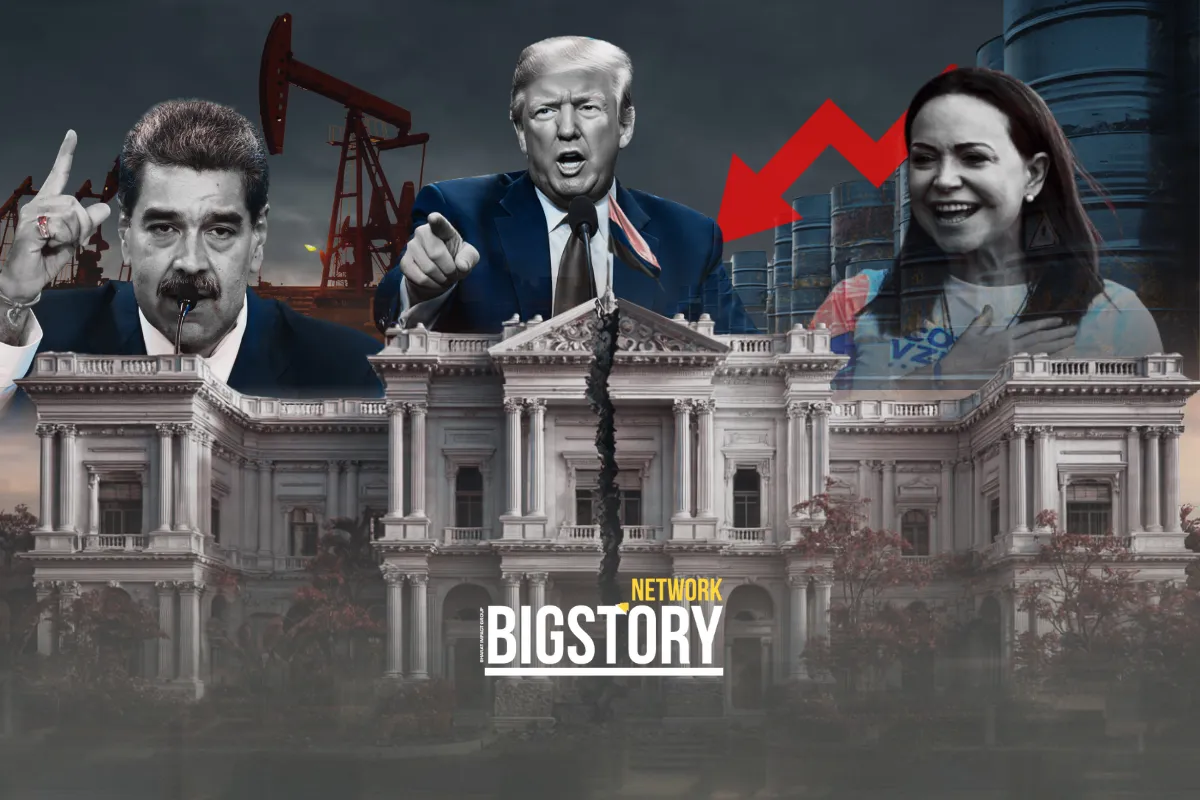India must overhaul its fragmented intelligence system—integrating structure, technology, and accountability—to meet 21st-century security challenges.
 Prof. (Dr.) Nishakant Ojha
Prof. (Dr.) Nishakant Ojha

The 2020 Galwan Valley clash with China, which resulted in the tragic loss of 20 Indian soldiers, served as a stark reminder of the critical importance of robust intelligence capabilities. Despite months of visible People's Liberation Army movements observable through commercial satellite imagery, India's intelligence establishment failed to prevent the crisis, raising fundamental questions about the effectiveness of our national intelligence apparatus . This intelligence failure was not an isolated incident but part of a persistent pattern observable throughout India's history—from the Pakistani incursions in Kargil in 1999 to the horrific 2008 Mumbai attacks. These repeated shortcomings demonstrate that India's intelligence system requires comprehensive reform aligned with international standards to address evolving threats in an increasingly complex security landscape. The need for transformation is not merely an administrative exercise but a strategic imperative for a nation with global aspirations operating in a volatile neighborhood. This article argues that India must undertake holistic intelligence reform based on strategic vision rather than crisis-driven responses, incorporating structural integration, technological modernization, human resource specialization, and robust oversight mechanisms to meet the challenges of the 21st century.
India's approach to intelligence reform has historically been crisis-driven rather than strategic, with changes implemented only after catastrophic failures. The intelligence landscape has evolved through a series of reactions to security breaches rather than proactive vision, creating a patchwork of improvements rather than a cohesive ecosystem . This pattern is evident across decades of India's security history, revealing a systemic inability to institutionalize lessons from intelligence failures.
The 1962 Sino-Indian War exposed critical gaps in external intelligence gathering, leading to the establishment of the Directorate General of Security within the Intelligence Bureau. Similarly, intelligence shortcomings preceding the 1965 war with Pakistan revealed limitations in monitoring external threats, ultimately leading to the bifurcation of the Intelligence Bureau and creation of the Research and Analysis Wing (R&AW) in 1968 specifically for foreign intelligence . This division was intended to create specialized capabilities for internal and external intelligence domains, but the implementation remained incomplete without addressing deeper structural issues.
The 1999 Kargil conflict represented another watershed moment where large-scale Pakistani incursions across the Line of Control went undetected, prompting the most significant introspection via the Kargil Review Committee and subsequent Group of Ministers (GOM) report in 2001 . These reforms created new institutions like the Defence Intelligence Agency (DIA) and National Technical Research Organisation (NTRO), and established coordination mechanisms such as the Multi-Agency Centre (MAC) for counter-terrorism intelligence . While theoretically sound, these mechanisms suffered from inadequate implementation and institutional resistance to information sharing.
Most troublingly, the 2008 Mumbai attacks laid bare persistent gaps in intelligence-policing coordination and real-time response, despite specific warnings about seaborne threats . While committees were formed and reports submitted, many core recommendations were ignored, demonstrating how bureaucratic inertia consistently undermines reform momentum . This pattern continues with the 2020 Ladakh crisis, revealing that systemic deficiencies remain unaddressed decades after initial identification. The classified nature of crucial reform documents, such as Chapter III of the Kargil Review Committee report dealing with intelligence apparatus, further stifles public discourse and expert input .
India's intelligence system faces deep-rooted structural problems that hinder its effectiveness against contemporary threats. The country currently maintains approximately 14 intelligence agencies with diverse and often overlapping responsibilities, creating significant coordination challenges . Unlike the United States, which created a Director of National Intelligence with budgetary and tasking authority after 9/11, India lacks a central coordinating authority with sufficient power to break down agency silos . The absence of a Director of National Intelligence or coordinating minister exacerbates integration problems and accountability gaps .
Turf wars and institutional rivalry represent a critical weakness in the current system. Multiple agencies with overlapping mandates often operate in isolation, engaging in what observers term "acrimony, friction, and professional rivalry" instead of collaboration . For instance, when military intelligence collects strategic intelligence beyond its tactical mandate, institutional reluctance to transfer sources or information to appropriate agencies impedes effectiveness. Similarly, the Intelligence Bureau's focus on domestic intelligence sometimes clashes with R&AW's external mandate at the blurred boundaries of cross-border threats . Coordination mechanisms like the Multi-Agency Centre (MAC) have faced resistance from agencies unwilling to share information, undermining their intended purpose as intelligence fusion centers .
The fragmented approach to technical intelligence further illustrates structural deficiencies. The creation of the National Technical Research Organisation (NTRO) following the Kargil War aimed to establish a dedicated technical intelligence capability modeled after agencies like the US National Security Agency . However, NTRO soon became mired in controversies regarding personnel policies and acquisitions, while other agencies continued developing their own technical wings, leading to duplication of capabilities and competition for resources rather than synergy .
The dominance of generalist officers from the Indian Police Service (IPS) in intelligence leadership positions creates significant expertise challenges. While not inherently problematic, this practice often prioritizes administrative experience over specialized intelligence expertise . Intelligence postings in state police departments are frequently considered "punishment postings," resulting in capability deficits at the critical state level where intelligence collection often begins . The rotational nature of military intelligence assignments similarly prevents expertise development, with officers typically serving short tenures before returning to their primary roles .
This system contrasts sharply with practices in other intelligence services. For instance, Pakistan's ISI Kashmir Desk has reportedly been under only four to five officers of Brigadier rank, ensuring consistency and accumulated expertise . India's frequent transfers prevent intelligence officers from developing deep cultural, linguistic, and contextual understanding crucial for effective intelligence operations. The lack of specialized recruitment from diverse fields such as technology, economics, regional studies, and languages further limits the intellectual diversity necessary for comprehensive intelligence analysis .
The absence of a dedicated intelligence cadre with competitive compensation and structured career paths discourages long-term commitment to intelligence professionalism . While R&AW initially envisioned open recruitment to create a specialized intelligence cadre, this plan failed to materialize fully, with the organization eventually reverting to heavy dependence on officers on deputation . The NTRO similarly struggled to develop a dedicated technical cadre, hampering its effectiveness despite advanced technological capabilities .
India's intelligence system has failed to keep pace with technological transformations reshaping the intelligence landscape. There has been significant underinvestment in Open-Source Intelligence (OSINT) capabilities, despite the growing importance of publicly available information in contemporary conflict and competition . The Ukraine conflict has demonstrated how private citizens, journalists, and retired officials can contribute meaningfully to intelligence analysis using OSINT and commercial satellite imagery, yet India's agencies have been slow to institutionalize these capabilities .
Over-reliance on foreign technology vendors creates critical vulnerabilities, as evidenced by incidents like the Pegasus malware attack on WhatsApp . By depending on third-system integrators and foreign technology providers, India potentially compromises its national security through hidden backdoors and vulnerabilities . The need for indigenous technological capabilities has never been more urgent, particularly with regard to encryption, surveillance, and cyber intelligence domains.
Perhaps most concerning is India's limited focus on China compared to Pakistan. As one analyst notes, "So far, we mostly focused on Pakistan, generating a tactical kind of intelligence, as a result of which China remained neglected" . The language barrier, China's opaque political system, and lack of cultural commonality present immense challenges that require specialized, long-term investment. China's intelligence operations represent "long protracted narrative wars" extending far beyond traditional espionage to include influence operations, economic coercion, and cultural sabotage .
India's intelligence framework suffers from a significant accountability deficit due to the absence of robust oversight mechanisms. Unlike democratic counterparts such as the United States with its congressional intelligence committees or the United Kingdom with its intelligence and security committee, India lacks formal parliamentary oversight of its intelligence agencies . This creates conditions where intelligence failures can occur without meaningful accountability and excessive secrecy may shield inefficiency from necessary scrutiny.
The legal framework governing intelligence operations remains archaic and inadequate. The Official Secrets Act of 1923, a colonial-era legislation, continues to be the primary law concerning official secrecy, while the Intelligence Organisations (Restriction of Rights) Act, 1985 provides the legal basis for organizations like IB and R&AW . India lacks modern legislation similar to the US Intelligence Reform and Terrorism Prevention Act (2004) that clearly defines agency mandates, authorities, and limitations while establishing protocols for coordination and oversight .
The culture of excessive secrecy extends to withholding even historical reform documents from public scrutiny. Most of the Kargil Review Committee report remains classified, particularly Chapter III dealing with the intelligence apparatus . Similarly, the Naresh Chandra Task Force report on national security constituted in 2012 has not been made public, preventing informed debate about necessary reforms . This contrasts sharply with the United States, which eventually declassified the "28 pages" of the 9/11 Commission Report, enabling public understanding and academic analysis .
India requires a comprehensive intelligence doctrine articulated through publicly available documents like a National Intelligence Strategy, similar to models adopted by advanced intelligence communities . This strategy should define priorities, methodologies, and accountability frameworks while accounting for India's specific security challenges and democratic values. The enactment of a modern intelligence act replacing archaic laws like the Official Secrets Act is essential to establish clear mandates, authorities, and limitations for intelligence agencies .
The creation of a National Intelligence Coordinator (NIC) position endowed with genuine budgetary control and tasking authority over all civilian agencies is essential to break down organizational silos . This NID should operate under the National Security Advisor but with sufficient authority to enforce coordination and standards across the intelligence community. Additionally, mission-centered task forces focused on priority targets (e.g., terrorism, cyber threats, China) with colocated analysts and collectors from different agencies would institutionalize integration rather than leaving it to personal relationships .
The relationship between intelligence collection and operations requires clarification through clear protocols. While separation of intelligence and policing functions is important for democratic accountability, mechanisms for seamless information sharing between agencies and with operational units like state police forces must be institutionalized . The proposed National Counter-Terrorism Centre (NCTC), stalled due to federal concerns, needs revisiting with appropriate safeguards for state powers .
India must develop a dedicated intelligence cadre recruited from diverse fields including technology, economics, regional studies, linguistics, and area specialists . This cadre should offer competitive compensation, structured career paths, and incentives for developing deep expertise rather than rotational assignments. Specialized recruitment is particularly crucial for building China expertise, where language capabilities and cultural understanding require long-term investment .
Training and professional development must emphasize analytical skills alongside collection capabilities. The establishment of a National Intelligence University similar to the United States model could standardize training across agencies while promoting interdisciplinary research on intelligence challenges . Mandatory joint duty programs requiring intelligence personnel to serve in other agencies for promotion to senior ranks would foster an integrated intelligence community culture .
For state intelligence capabilities, which constitute "the weakest link in our intelligence apparatus," professionalization with dedicated funding, training, and career advancement opportunities is essential . Intelligence postings should be transformed from "punishment postings" to coveted specialized tracks within state police forces, with appropriate incentives for performance .
India must make strategic investments in indigenous technical capabilities through public-private partnerships with India's growing technology sector . Reducing dependence on foreign vendors is crucial for national security, particularly in encryption, surveillance technology, and cyber intelligence. The integration of artificial intelligence and machine learning for processing vast intelligence information represents another priority, requiring specialized recruitment and partnerships with academic institutions .
A dedicated Open-Source Intelligence Centre should be established to harness the power of publicly available information, including social media, satellite imagery, academic publications, and media reports . This center should collaborate with academic institutions and think tanks to augment analytical capabilities while developing standards for OSINT collection and analysis .
Cyber intelligence capabilities require significant enhancement to address growing threats in this domain. The National Cyber Coordination Centre (NCCC) needs strengthening with clear mandates and authorities, while collaboration between technical agencies like NTRO and collection agencies like IB and R&AW must be institutionalized . The emergence of technologies like quantum computing demands proactive research and development to prevent strategic surprises .
The creation of a Parliamentary Intelligence Oversight Committee comprising senior members from key parties, sworn to secrecy, is essential for democratic accountability . Similar to the US model, this committee should receive regular briefings on intelligence activities, budgets, and operations while protecting genuine secrets through appropriate security protocols .
Judicial oversight of intelligence activities, particularly surveillance, needs strengthening through legislation similar to the US Foreign Intelligence Surveillance Act (FISA). The Supreme Court's recognition of the right to privacy in the Puttaswamy judgment creates constitutional imperatives for reforming intelligence oversight mechanisms .
A strategic declassification policy would enable learning from past operations while protecting ongoing capabilities. Historical records related to significant intelligence failures and successes should be systematically declassified after appropriate redaction, enabling academic research and institutional learning . The current practice of excessive classification undermines accountability and institutional memory.
The reformation of India's intelligence system represents one of the most pressing national security challenges of our time. The increasingly aggressive posture of China, the persistence of Pakistan-supported terrorism, and emerging threats in cyber and narrative warfare demand a fundamentally transformed intelligence architecture . Incremental changes and crisis-driven reforms have proven insufficient to address systemic deficiencies that have persisted for decades.
Reforming India's intelligence system requires political will beyond crisis response. The successful execution of operations like the Balakot airstrikes and Article 370 abrogation demonstrates capacity for strategic intelligence when properly prioritized . However, these tactical successes must be institutionalized through systematic reform rather than remaining dependent on individual leadership or specific political conditions.
The global intelligence landscape is transforming rapidly with technological disruption creating both challenges and opportunities. Artificial intelligence, quantum computing, commercial satellite imagery, and open-source intelligence are democratizing capabilities that were once state monopolies . India's intelligence community must adapt to this new environment by embracing innovation while maintaining core human intelligence capabilities.
For India to achieve its global aspirations and ensure national security in a volatile region, it must transform its intelligence system from a collection of bureaucratic fiefdoms into an integrated, technologically advanced, and strategically focused community worthy of a 21st-century global power. This transformation requires holistic reform encompassing structural integration, human resource specialization, technological modernization, and robust oversight—implemented through strategic vision rather than crisis response. The time for comprehensive intelligence reform aligned with international standards is not just opportune—it is essential for India's security and global position. As one analyst aptly notes, "India needs to overhaul its intelligence machinery and approach to address the China challenge as China's intelligence operations are long protracted narrative wars and go far beyond tactical espionage" . The silent battle of intelligence reform must be won to secure India's future in an increasingly complex threat environment.






Sign up for the Daily newsletter to get your biggest stories, handpicked for you each day.
 Trending Now! in last 24hrs
Trending Now! in last 24hrs